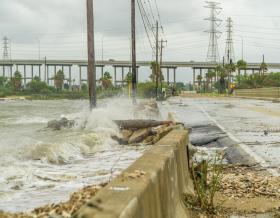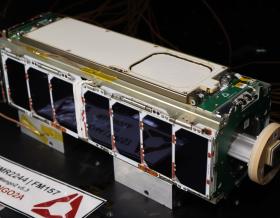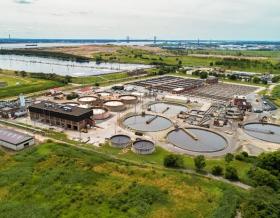Jacobs and long-standing client, Roads & Maritime Services, have received the coveted Sir Thomas Mitchell Award at the Institution of Surveyors NSW, Excellence in Surveying & Spatial Information (EISSI) Awards for their work to improve maintenance practices on the Sydney Harbour Bridge. The award recognizes the most outstanding overall project.
Completed in 1932, the Sydney Harbour Bridge dominates the Sydney city landscape as one of Australia’s iconic heritage landmarks and is admired by locals and visitors alike. Roads & Maritime is currently responsible for maintaining the bridge and protecting the steel structure from corrosion.
Jacobs’ spatial team, responsible for delivering surveying, Geographical Information Systems (GIS) and imagery, and aerial surveying services, was brought in to help Roads & Maritime improve current maintenance practices.
“The team provided laser scanning and precision modelling services to support the design and installation of rails along the eastern and western sides of the bridge arch for two independent Arch Maintenance Units to travel along,” said Jacobs Global Technology Leader - Geospatial Mary-Ellen Feeney. “The maintenance units will increase efficiency and provide significant safety benefits to Roads & Maritime when undertaking painting and other routine maintenance activities on the bridge.”
Due to the unique location, continual movement of the bridge, safety considerations and the high degree of relative accuracy required, the project involved developing and testing a unique survey methodology, using bespoke equipment and multiple laser scanners operating concurrently.
The team used Terrestrial Laser Scanning (TLS) technology to create a high-precision, three-dimensional Computer-Aided Design and Drafting (CADD) model of the bridge structure. Laser scanning surveys taken over 10 nights and subsequent modelling produced the high precision 3D CADD model, which included more than 41,000 rivets, brackets, hatches, portals, stairs, hand rails and services. The data was captured and processed to meet Roads & Maritime survey specifications.
Supporting further investigation of the structural behavior of the Sydney Harbour Bridge due to train loading and thermal effects, simultaneous monitoring surveys of the eastern and western arches were conducted to determine the relative horizontal and vertical movements between the two arches. Survey results assisted with understanding the actual movement patterns and their magnitude.
























































